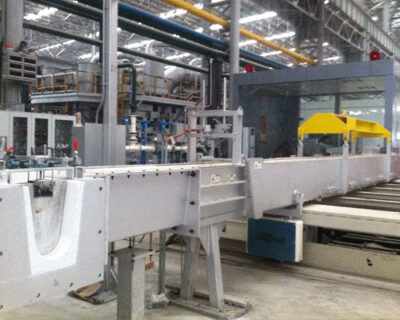The process of directly “rolling” molten metal into semi-finished or finished products is called continuous cast rolling technology. The fundamental difference between twin-roll continuous casting and other continuous ingot casting methods is that the mold is two rotating casting rolls with cooling, and the liquid must be solidified and hot-rolled in the gap between the two rolls, and It is completed in a short area (cast-rolling zone) in a short time (2-3s). Continuous cast rolling is not the same as continuous casting and rolling. Continuous casting and rolling is the process of continuous rolling on subsequent rolling mills after the liquid metal is solidified into billets in the mold of the casting machine. Billet casting and rolling are two independent processes.
Features of Continuous Cast Rolling Technology
Molten metal becomes billet or material at one time, which shortens the production process, simplifies the production process, and saves a lot of equipment investment and source consumption. One casting and rolling mill can replace the traditional DC casting machine, heating furnace, and billeting machine, and its equipment costs It is only 1/3 of the hot-rolled billet. Due to the elimination of secondary heating and reduction of rolling passes, the energy consumption is only 40% of the traditional production method.
The cooling rate of continuous cast rolling reaches 100~1000K/s, which is much higher than the DC casting method (2-3K/s). Therefore, the dendrite spacing of the cast-rolled sheet is only 5-10μm, the metal compound particles are fine, 1-2μmn, and the supersaturation of the solute element in the solid solution is greatly improved, which increases the tensile strength and yield strength of the cast-rolling by 10%~ 20%, the recrystallization temperature increases by tens of degrees.
The combination of casting and rolling improves the compactness of the metal structure, eliminates shrinkage and porosity, reduces defects such as segregation, eliminates cutting ends and ends, and increases the yield rate by about 15%.
It can realize continuous and automatic casting and rolling production, which is conducive to scientific management and improvement of labor production conditions.

